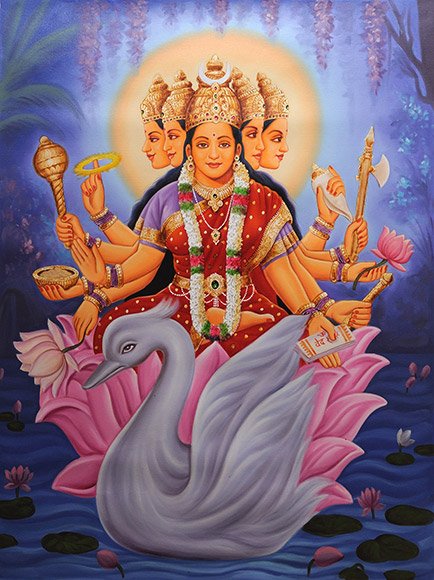Samgata, Saṅgata, Saṃgata, Saṅgatā, Saṃgatā, Sangata: 21 definitions
Introduction:
Samgata means something in Hinduism, Sanskrit, Buddhism, Pali, Marathi, Hindi. If you want to know the exact meaning, history, etymology or English translation of this term then check out the descriptions on this page. Add your comment or reference to a book if you want to contribute to this summary article.
Alternative spellings of this word include Sangat.
In Hinduism
Purana and Itihasa (epic history)
Source: archive.org: Puranic EncyclopediaSaṃgata (संगत).—(SAṄGATA). A King of the Maurya dynasty. He was the son of King Suyaśas and the father of King Śāliśūraka. (Bhāgavata, Skandha 12).
Source: archive.org: Shiva Purana - English TranslationSaṃgata (संगत) refers to “having accrued (merit)” [?], according to the Śivapurāṇa 2.3.32 (“The seven celestial sages arrive”).—Accordingly, as the Seven Sages said to Śiva: “[...] Formerly we had performed three kinds of penance; we had studied the excellent Vedas; we had made offerings in the fire, we had visited many holy centres; thus whatever merit we have acquired verbally, mentally and physically that entire merit has now accrued to us (saṃgata—tatsarvaṃ saṃgataṃ cādya) by your blessing in remembering us. A man who worships you always shall be blessed. How can that merit be properly described, the merit of those whom you yourself remember? [...]”.
Source: Cologne Digital Sanskrit Dictionaries: The Purana IndexSaṅgata (सङ्गत).—A son of Suyaśas, and father of Śāliśūka.*
- * Bhāgavata-purāṇa XII. 1. 14.

The Purana (पुराण, purāṇas) refers to Sanskrit literature preserving ancient India’s vast cultural history, including historical legends, religious ceremonies, various arts and sciences. The eighteen mahapuranas total over 400,000 shlokas (metrical couplets) and date to at least several centuries BCE.
Chandas (prosody, study of Sanskrit metres)
Source: Journal of the University of Bombay Volume V: Apabhramsa metres (2)Saṃgatā (संगता) is the name of a catuṣpadi metre (as popularly employed by the Apabhraṃśa bards), as discussed in books such as the Chandonuśāsana, Kavidarpaṇa, Vṛttajātisamuccaya and Svayambhūchandas.—Saṃgatā has 30 mātrās in each of its four lines, divided into the groups of [SII], [SII], [SII], [SII], [SII], [SII], [SII] and [S] mātrās.

Chandas (छन्दस्) refers to Sanskrit prosody and represents one of the six Vedangas (auxiliary disciplines belonging to the study of the Vedas). The science of prosody (chandas-shastra) focusses on the study of the poetic meters such as the commonly known twenty-six metres mentioned by Pingalas.
Kavya (poetry)
Source: Brill: Śaivism and the Tantric Traditions (kavya)1)Saṃgata (संगत) refers to a “meeting” (e.g., ‘the ministers joining the chaplain’), according to Kālidāsa’s Raghuvaṃśa verse 19.54.—Accordingly: “The ministers joined by (saṃgata) the chaplain who knew the last rites placed him on the pyre in secret in the palace garden under the pretext of a ceremony that averts disease”.
2) Saṃgata (संगत) also refers to “(being) united”, according to the Raghuvaṃśa.—Accordingly, “The mantras of Vasiṣṭha, the Guru, and the arrows (sāyaka) of that archer—what is there to achieve that these two could not achieve when united (saṅgata)?”.

Kavya (काव्य, kavya) refers to Sanskrit poetry, a popular ancient Indian tradition of literature. There have been many Sanskrit poets over the ages, hailing from ancient India and beyond. This topic includes mahakavya, or ‘epic poetry’ and natya, or ‘dramatic poetry’.
Languages of India and abroad
Pali-English dictionary
Source: BuddhaSasana: Concise Pali-English Dictionarysaṅgata : (pp. of saṅgacchati) met with; come together.
Source: Sutta: The Pali Text Society's Pali-English DictionarySaṅgata, (pp. of saṅgacchati) 1. come together, met Sn. 807, 1102 (=samāgata samohita sannipātita Nd2 621); nt. saṅgataṃ association Dh. 207.—2. compact, tightly fastened or closed, well-joined Vv 642 (=nibbivara VvA. 275). (Page 666)

Pali is the language of the Tipiṭaka, which is the sacred canon of Theravāda Buddhism and contains much of the Buddha’s speech. Closeley related to Sanskrit, both languages are used interchangeably between religions.
Marathi-English dictionary
Source: DDSA: The Molesworth Marathi and English DictionarySaṅgata (सङ्गत).—a (S) pop. saṅgatavāra a Apposite, consistent, congruous, consentaneous, duly connected or coherent.
--- OR ---
sāṅgatā (सांगता).—f (A formation with sāṅga or sa & aṅga, & tā Affix.) Completeness, fullness, perfection (of a ceremony, rite, business &c.) consisting in the presence of every article and item, and in the due performance of every part, point, and particular, appertaining, subsidiary, or suitable. 2 A common term (by metonymy) for brāhmaṇabhōjana & dakṣiṇā (Entertainment or feasting of Brahmans, and Presenting of a piece of money to the guests at the breaking up of a festal &c. occasion); these two acts being viewed as indispensable points in the completeness of a ceremony or business.
Source: DDSA: The Aryabhusan school dictionary, Marathi-EnglishSaṅgata (सङ्गत) [-ti, -ति].—f Union, association, society. Congruity, consistency, harmonious connection.
--- OR ---
saṅgata (संगत) [-tī, -ती].—c A companion, comrade, associate.
--- OR ---
saṅgata (संगत).—a Apposite, consistent, duly connected or coherent.
--- OR ---
sāṅgatā (सांगता).—f Completeness.
Marathi is an Indo-European language having over 70 million native speakers people in (predominantly) Maharashtra India. Marathi, like many other Indo-Aryan languages, evolved from early forms of Prakrit, which itself is a subset of Sanskrit, one of the most ancient languages of the world.
Sanskrit dictionary
Source: DDSA: The practical Sanskrit-English dictionarySaṃgata (संगत).—p. p.
1) Joined or united with, come together, associated with; तदा गन्तव्यमनिशं भवद्भिरिह संगतैः (tadā gantavyamaniśaṃ bhavadbhiriha saṃgataiḥ) Rām. 7.36.58.
2) Assembled, collected, convened, met together.
3) Joined in wedlock, marrried.
4) Sexually united.
5) Fitted together, appropriate, harmonious; शृणुतमिदानीं संगतार्था न वेति (śṛṇutamidānīṃ saṃgatārthā na veti) Ś.3.
6) In conjunction with (as planets).
7) Shrunk up, contracted; see गम् (gam) with सम् (sam).
-tam Union, meeting, alliance; संगतं श्रीसरस्वत्योर्भूत- येऽस्तु सदा सताम् (saṃgataṃ śrīsarasvatyorbhūta- ye'stu sadā satām) V.5.24; Ś.5.24; Kirātārjunīya 14.22.
2) Association, company.
3) Acquaintance, friendship, intimacy; यतः सतां संनतगात्रि संगतं मनीषिभिः साप्तपदीनमुच्यते (yataḥ satāṃ saṃnatagātri saṃgataṃ manīṣibhiḥ sāptapadīnamucyate) Ku. 5.39.
4) A harmonious or consistent speech, wellreasoned remarks.
Source: Cologne Digital Sanskrit Dictionaries: Edgerton Buddhist Hybrid Sanskrit DictionarySaṃgata (संगत).—adj. (ppp. of Sanskrit sam-gam-), in saṃgata-bhrū Lalitavistara 107.9, probably with dense (thick) eyebrows, one of the anuvyañjana; compare Pali saṃgata = nibbivara, without interstices, Vimānavatthu (Pali) commentary 275.27; corresp. to snigdha-bhrū of parallel texts.
Source: Cologne Digital Sanskrit Dictionaries: Shabda-Sagara Sanskrit-English DictionarySaṅgata (सङ्गत).—mfn.
(-taḥ-tā-taṃ) 1. Apposite, proper, (as speech.) 2. Mixed, united. 3. Met, encountered. 4. Collected, accumulated. 5. In conjunction, (of planets.) f.
(-tā) 1. Convened, met. 2. Joined. 3. United in wedlock. 4. Adapted. 5. Contracted, shrunk up n.
(-taṃ) 1. Friendship, acquaintance. 2. Union, meeting. 3. Alliance. 4. A consistant speech. E. sam, gata gone.
Source: Cologne Digital Sanskrit Dictionaries: Cappeller Sanskrit-English DictionarySaṃgata (संगत).—[adjective] come together, met, united; fit, proper, suitable to (—°). —[neuter] meeting, union, alliance, intercourse, connection, stipulation.
Source: Cologne Digital Sanskrit Dictionaries: Monier-Williams Sanskrit-English Dictionary1) Saṅgaṭa (सङ्गट):—a See p. 1133, col. 1.
2) [from saj] b m. Name of men, [Rājataraṅgiṇī]
Source: Cologne Digital Sanskrit Dictionaries: Monier-Williams Sanskrit-English Dictionary1) Saṃgata (संगत):—[=saṃ-gata] [from saṃ-gam] mfn. come together, met, encountered, joined, united, [Atharva-veda] etc. etc.
2) [v.s. ...] allied with, friendly to ([instrumental case] or [compound]), [Gautama-dharma-śāstra; Rājataraṅgiṇī]
3) [v.s. ...] fitted together, apposite, proper, suitable, according with or fit for ([compound]), [Kāvya literature; Kathāsaritsāgara]
4) [v.s. ...] contracted, shrunk up, [Mahābhārata] (cf. [compound]), in conjunction (as planets), [Horace H. Wilson]
5) [v.s. ...] m. ([scilicet] saṃdhi) an alliance or peace based on mutual friendship, [Kāmandakīya-nītisāra; Hitopadeśa]
6) [v.s. ...] Name of a king (belonging to the Maurya dynasty), [Purāṇa]
7) [v.s. ...] n. coming together, meeting with ([instrumental case] [locative case] [genitive case], or [compound]), [Mahābhārata; Kāvya literature] etc.
8) [v.s. ...] frequent meeting, intercourse, alliance, association, friendship or intimacy with ([instrumental case] [genitive case], or [compound]), [Kaṭha-upaniṣad; Manu-smṛti; Mahābhārata] etc.
9) [v.s. ...] addiction or devotion to ([genitive case]), [Kāvyādarśa]
10) [v.s. ...] agreement, [Mahābhārata]
Source: Cologne Digital Sanskrit Dictionaries: Yates Sanskrit-English DictionarySaṅgata (सङ्गत):—[sa-ṅgata] (taḥ-tā-taṃ) a. Met, united, collected; meet, proper. n. Friendship, union.
Source: DDSA: Paia-sadda-mahannavo; a comprehensive Prakrit Hindi dictionary (S)Saṃgata (संगत) in the Sanskrit language is related to the Prakrit words: Abbhiḍia, Saṃgaya.
[Sanskrit to German]
Sanskrit, also spelled संस्कृतम् (saṃskṛtam), is an ancient language of India commonly seen as the grandmother of the Indo-European language family (even English!). Closely allied with Prakrit and Pali, Sanskrit is more exhaustive in both grammar and terms and has the most extensive collection of literature in the world, greatly surpassing its sister-languages Greek and Latin.
Hindi dictionary
Source: DDSA: A practical Hindi-English dictionarySaṃgata (संगत) [Also spelled sangat]:—(nf) company; accompaniment; (a) relevant; logical, rational; compatible; —[karanā] to accompany; ~[kāra] an accompanist; ~[tā] rationality; logicality; relevance; compatibility.
...
Kannada-English dictionary
Source: Alar: Kannada-English corpusSaṃgaṭa (ಸಂಗಟ):—
1) [noun] a narrow passage or room; a strait.
2) [noun] a difficult, critical condition; a danger.
3) [noun] the distress or suffering, mental or physical, caused by anxiety, anguish, grief, disappointment, etc.
4) [noun] sorrow; grief.
5) [noun] a bunch of fruits or flowers.
--- OR ---
Saṃgata (ಸಂಗತ):—
1) [adjective] joined; associated (with).
2) [adjective] copulated with; had sexual intercourse.
3) [adjective] gathered; crowded; thronged.
4) [adjective] fit; proper; appropriate.
--- OR ---
Saṃgata (ಸಂಗತ):—
1) [noun] the act of gathering, crowding (at a place).
2) [noun] the quality of being appropriate, proper.
3) [noun] a convincing speech.
4) [noun] the relation that exists between two friends; friendship.
5) [noun] a covenant of friendship between two kings or nations.
--- OR ---
Saṃgāṭa (ಸಂಗಾಟ):—[adverb] = ಸಂಗಡ [samgada]2.
--- OR ---
Saṃgāta (ಸಂಗಾತ):—[noun] = ಸಂಗಡ [samgada]1.
--- OR ---
Saṃgāta (ಸಂಗಾತ):—[adverb] = ಸಂಗಡ [samgada]2.
Kannada is a Dravidian language (as opposed to the Indo-European language family) mainly spoken in the southwestern region of India.
See also (Relevant definitions)
Partial matches: Gata, Sam, Shan, Can.
Starts with: Samgatadale, Samgatagatra, Samgataka, Samgataprekshana, Samgatarasha, Samgatartha, Samgatasamdhi, Samgatasandhi, Samgatavadisu.
Ends with (+3): Abhisamgata, Asamgata, Asangata, Ashokasamgata, Atmasamgata, Bhujamgasamgata, Bhujangasamgata, Jarasamgata, Kulasamgata, Kusamgata, Manasasamgata, Nihsangata, Parasamgata, Parisamgata, Prasamgata, Ranasamgata, Samasamgata, Sarvasamgata, Susamgata, Upasamgata.
Full-text (+74): Samgatasamdhi, Samgatagatra, Samgataka, Samgatartha, Parasangata, Samgatya, Asamgatya, Sarvasangata, Asangata, Parasamgata, Asamgata, Sarvasamgata, Asamgataprabha, Abhisamgata, Krodhayamana, Susamgata, Suniti, Bhujamgasamgata, Sangata-hunu, Jarasamgata.
Relevant text
Search found 25 books and stories containing Samgata, Saṅgata, Sangāṭa, Saṃgata, Saṅgaṭa, Saṅgāṭa, Saṃgāṭa, Sangaṭa, Saṃgāta, Saṃgaṭa, Saṅ-gata, San-gata, Sāṅgatā, Saṅgatā, Saṃgatā, Sangata, Saṅgāta, Sangāta, Saṃ-gata, Sam-gata, Saṃ-gatā, Saṅ-gatā; (plurals include: Samgatas, Saṅgatas, Sangāṭas, Saṃgatas, Saṅgaṭas, Saṅgāṭas, Saṃgāṭas, Sangaṭas, Saṃgātas, Saṃgaṭas, gatas, Sāṅgatās, Saṅgatās, Saṃgatās, Sangatas, Saṅgātas, Sangātas, gatās). You can also click to the full overview containing English textual excerpts. Below are direct links for the most relevant articles:
Brihad Bhagavatamrita (commentary) (by Śrī Śrīmad Bhaktivedānta Nārāyana Gosvāmī Mahārāja)
Verse 2.3.112 < [Chapter 3 - Bhajana (loving service)]
Verse 2.4.130 < [Chapter 4 - Vaikuṇṭha (the spiritual world)]
Verse 2.3.136 < [Chapter 3 - Bhajana (loving service)]
Bhakti-rasamrta-sindhu (by Śrīla Rūpa Gosvāmī)
Verse 1.4.3 < [Part 4 - Devotional service in Love of God (prema-bhakti)]
Verse 1.4.2 < [Part 4 - Devotional service in Love of God (prema-bhakti)]
Verse 3.4.81 < [Part 4 - Parenthood (vātsalya-rasa)]
Sahitya-kaumudi by Baladeva Vidyabhushana (by Gaurapada Dāsa)
Text 10.193 < [Chapter 10 - Ornaments of Meaning]
Text 4.67 < [Chapter 4 - First-rate Poetry]
Text 10.47 < [Chapter 10 - Ornaments of Meaning]
Rig Veda (translation and commentary) (by H. H. Wilson)
The Tattvasangraha [with commentary] (by Ganganatha Jha)
Verse 2825 < [Chapter 25 - Examination of the Doctrine of ‘Self-sufficient Validity’]
Verse 1219 < [Chapter 17 - Examination of the Definition of Sense-perception]
Verse 206 < [Chapter 7 - Doctrine of the Self (ātman, ‘soul’)]
Cidgaganacandrika (study) (by S. Mahalakshmi)
Verse 46 [Śakti and Kula-Dharma] < [Chapter 2 - Second Vimarśa]
Part 15 - Fifteen states formed by Jāgrat, Svapna, Suṣupti and Turīya < [Philosophy of Kashmir Tantric System]